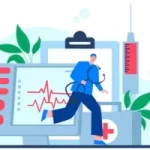Course Summary
Within the ever-growing industry of engineering, there is an increasing amount of potential for minor and major accidents to occur, especially if an organisation is not fully risk-aware.
As an engineer and those in a leadership or management position, it is incredibly important to be fully competent and aware of the risks associated with the industry. The process of risk management is to identify hazards, document risks and create and implement methods of control. There are a vast number of methods that can be utilised to analyse risks and aid in establishing preventative measures, and these can be extremely beneficial as they can help negate the potential for human error.
Enforcing stricter health and safety processes is essential for an organisation to maintain peak productivity. Not only can major incidents impact funds and assets, but they can also lead to engineers becoming greatly hurt. Complete knowledge and understanding of risk management can enable a business to function to its maximum potential.
During this course, you’ll learn:
- To understand the importance of health and safety within an organisation.
- To assess how and why incidents may occur.
- To identify hazards utilising different methods and techniques.
- To evaluate the short and long-term effects of incidents on business productivity.
- To review what records and documents need to be created and maintained when conducting risk assessments.
- To account for regional and international health and safety regulations.
- To explain what health and safety circumstances are commonly faced within the industry.
- To advise on the ideal practices to reduce risk.
To assess what control measures can be applied to manage risk.
This course is designed for anyone within the engineering industry who is responsible for maintaining health and safety. It would be most beneficial for:
- HSE Personnel
- Engineering Project Managers
- Construction/Site Supervisors
- Construction/Site Managers
- Engineering Directors
- Process Safety Managers
- Operation Managers
- Chief Engineering Officers (CEOs)
This course uses a variety of adult learning styles to aid full understanding and comprehension. Participants will review real-world examples of risk management documents to highlight areas of risk and what factors may lead to accidents.
They will be supplied with all the necessary tools and equipment required to effectively conduct the given learning exercises. With a combination of video materials, presentations, and practical activities, participants will be provided with ample opportunities to develop their knowledge and practical skills relating to the taught content. Furthermore, they will be able to create their own risk management plans in relation to their respective roles to gain a full understanding of the processes.
Course Content & Outline
Section 1: Fundamentals of Health and Safety
- Defining health and safety.
Understanding the role health and safety serves within an engineering organisation.
What are the driving factors in maintaining health and safety
Construction Projects Legislation (ILO & EU).
Accident and incident causation.
Principles of risk assessments.
- Fire safety and preparation – Fire extinguishers, fire blankets, alarms.
Section 2: Health and Safety Plans
- Constructing project health and safety plans.
Project excavations and confined spaces.
Major incidents and how they occur.
Environmental factors that contribute to health and safety.
Identifying hazards and system safety processes.
Methods of hazard identification - HAZOP, LOPA, and FMEA.
- Assessing and implementing control measures for identified hazards and risks.
Section 3: Human Influences
- Understanding the potential for human error.
Correctly utilising digital programs and technologies to reduce human error potential.
Effective communication in verbal and non-verbal forms in relation to awareness about risks.
Human influence in major incidents.
- Reducing errors and violations.
Section 4: Accidents and Control
- Finding the balance between risk certainty and uncertainty.
Types of analysis conducted to measure risk types and severity – FMEA, RPN, RBD, and RCM.
Appropriately documenting found risks and preventative measures in place.
Thoroughly investigating incidents if they occur to evaluate the cause and future preventative measures.
- Design and reliability of control and protective systems.
Section 5: Organisational Culture Surrounding Health and Safety
- Permit to work systems (PTW).
Creating open discussions about health and safety and encouraging others to understand the importance.
Implementing active monitoring of machinery or high-risk processes.
- Educating others on health and safety practices












